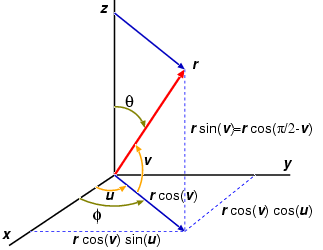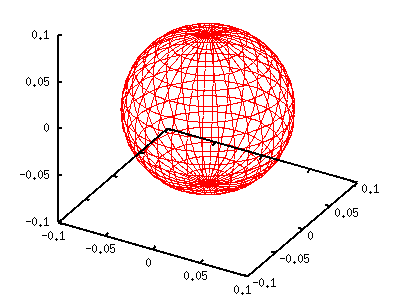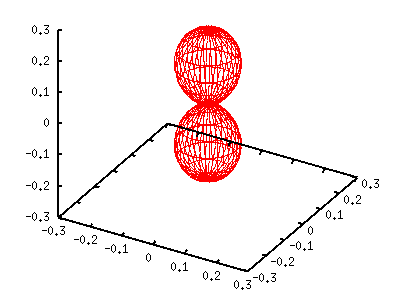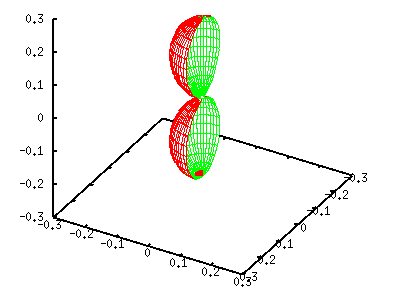gnuplot / spherical_harmonics / spharm (1E)
Spherical Harmonics The spherical harmonics in the polar coordinate Y[lm](theta,phi) is  where P[lm] is the associated Legendre function. The value
In the gnuplot parametric representation, the angle u is the cos(theta)=sin(v) sin(theta)=cos(v) The simplest spherical harmonics can be obtained by setting l=0 and gnuplot> set parametric dummy variable is t for curves, u/v for surfaces gnuplot> set angle degree gnuplot> set urange [0:360] gnuplot> set vrange [-90:90] gnuplot> set isosample 36,18 gnuplot> set ticslevel 0 gnuplot> set size 0.65,1.0 gnuplot> a=1.0/(4*pi) gnuplot> fx(u,v)=cos(u)*cos(v) gnuplot> fy(u,v)=sin(u)*cos(v) gnuplot> fz(v)=sin(v) gnuplot> splot a*fx(u,v),a*fy(u,v),a*fz(v)
The left graph is a square of Y[00], which is a sphere whose center Next, we consider the case of l=1 and m=0. This function becomes gnuplot> a=3.0/(4*pi) gnuplot> g(v)=sin(v)*sin(v) gnuplot> splot a*g(v)*fx(u,v),a*g(v)*fy(u,v),a*g(v)*fz(v)
The cross-section of spherical harmonics can be shown gnuplot> set urange [0:180] gnuplot> set hidden3d gnuplot> splot a*g(v)*fx(u,v),a*g(v)*fy(u,v),a*g(v)*fz(v)
from Dr.Nakamura of TUS. Thanks !
|






